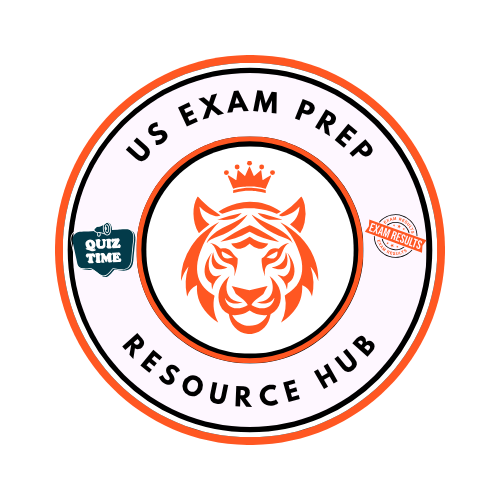
Colleges across the United States utilize the ACCUPLACER exam test to thoroughly evaluate students’ readiness for college-level coursework, ensuring placements align precisely with individual skill levels. Administered by the College Board, this computer-adaptive assessment measures proficiency in critical areas such as reading, writing, and mathematics, with optional sections addressing English as a Second Language (ESL) and computer literacy skills. Unlike traditional fixed-score tests, the ACCUPLACER dynamically adjusts question difficulty based on your responses, offering a highly accurate assessment of your academic abilities. Strong performance on the ACCUPLACER exam test saves significant time and tuition costs, accelerates degree completion, and fosters confidence. This guide provides actionable strategies for effective preparation and high placement.
Decoding the ACCUPLACER Exam Test Format for Optimal Preparation
Understanding the structure of the ACCUPLACER exam test reduces test-day anxiety and sharpens focus on critical areas. The test includes multiple-choice questions in reading, writing, and math, each targeting specific competencies. Reading, with 20 questions, evaluates comprehension of texts, main ideas, and inferences. Writing has 25 questions on grammar and mechanics, plus an optional WritePlacer essay requiring a timed, coherent response. Math divides into Arithmetic (17-20 questions on basics), Quantitative Reasoning (20 questions on ratios and geometry), and Advanced Algebra (20 questions on quadratics and trigonometry). The adaptive system routes you to harder questions for higher placement when you answer correctly. Reviewing official College Board samples prepares you for the untimed test, lasting 1-3 hours.
Crafting a Tailored Study Plan to Achieve College Placement Success
Creating a personalized study plan based on diagnostic results is vital for ACCUPLACER exam test success. Start with a full practice test via the College Board’s app to identify strengths and weaknesses across sections. If scores are low, commit to 4-8 weeks of intensive preparation or 12 weeks for deeper mastery. Prioritize topics like math, allocating 40% of study time to fractions and algebra drills. Use active techniques like Pomodoro 25 minutes of study, 5-minute breaks to boost focus and retention. Weekly simulated tests, paired with error analysis, ensure dynamic adjustments. Track progress in a journal, shifting focus to areas like writing revisions as needed, transforming review into growth.
Proven Math Strategies to Excel in the ACCUPLACER Exam Test
Mastering math for the ACCUPLACER exam test requires building efficiency and depth in foundational skills. Practice arithmetic basics, such as converting fractions to decimals, solving rate problems, and applying order of operations accurately. Progress to quantitative reasoning by analyzing graphs, tables, and geometry concepts like areas and volumes. For algebra, systematically solve equations, factor polynomials, and use substitution. Employ techniques like back-solve plugging in answer choices or dimensional analysis for conversions to manage pressure. Categorize mistakes (calculation vs. conceptual) and revisit principles using Khan Academy. These methods reduce errors, boost adaptive scores, and skip remedial courses.
Sharpening Reading and Writing Skills for Superior ACCUPLACER Performance
Elevating verbal skills is key to excelling in the ACCUPLACER exam test’s reading and writing sections. In reading, annotate passages for arguments, evidence, and tone to answer questions on context and ideas swiftly. Practice diverse texts, like science and history, to build adaptability. For writing, drill grammar agreement, pronouns, punctuation and revise sentences consistently. Outline Write Placer essays with a thesis, examples, and summary for coherence. Use peer reviews or checklists to refine drafts, focusing on clarity. Authentic practice hones analysis, surpassing benchmarks for credit-bearing courses and ensuring college placement success.
Implementing Effective Test-Taking Tactics on ACCUPLACER Exam Day
Smart tactics on ACCUPLACER exam test day optimize performance and reduce stress. Arrive early with ID, practicing deep breathing for focus. Read prompts fully, eliminate incorrect options, and flag uncertainties for review. In math, sketch solutions on paper; in verbal sections, paraphrase questions for clarity. Trust preparation to avoid second-guessing, pacing to prevent fatigue. Request score reports post-test to plan retakes if allowed. These steps elevate placements, turning challenges into opportunities for success.
Leveraging Resources and Practice for Sustained ACCUPLACER Mastery
Accessing diverse resources strengthens ACCUPLACER exam test preparation. Use the College Board’s app for interactive questions and feedback. Supplement with books like “ACCUPLACER Study Guide” for mocks and explanations. Explore Union Test Prep and Study.com for tutorials and flashcards. Join workshops or forums to share strategies. Conduct bi-weekly simulations, debriefing to track gains, like algebra accuracy. This approach solidifies knowledge and builds confidence.
Seize Your Path to College Placement Success Today
Excellence on the ACCUPLACER exam test demands dedication but yields faster college progress and savings. Decode the format, craft plans, master skills, and apply tactics. Act now: download the app, take diagnostics, and start sessions. Register through your institution, explore tutorials, and track progress. Embrace these strategies to unlock your academic potential.

